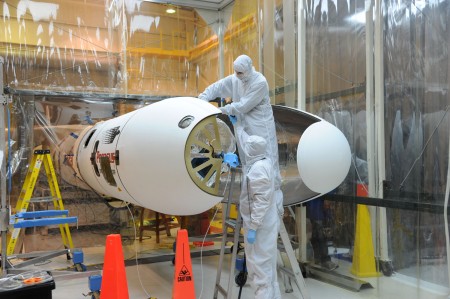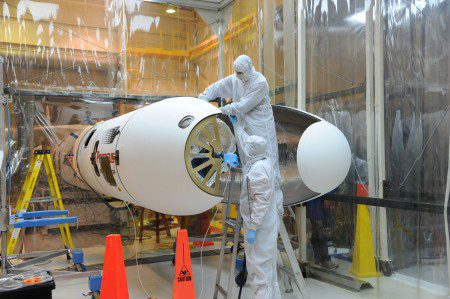
NASA’s Nuclear Spectroscopic Telescope Array, or NuStar, recently detected five huge black holes, so big and bad they have been deemed to be monsters. Though the California Institute of Technology in Pasadena leads the Small Explorer mission NuStar, and NASA’s Jet Propulsion Laboratory manages it, the five massive black holes were discovered through the research of astronomers at Durham University, United Kingdom. The researchers presented their findings on Monday, July 6, in Llandudno, Wales, at the Royal Astronomical Society’s National Astronomy Meeting.
Though it had long been theorized that there were more black holes in the universe than could easily be detected by most telescopes, nobody knew for sure until the team of astronomers at Durham University discovered five of them underneath thick clouds of dust and gas. From those five, the researchers have extrapolated that there might be millions of black holes in the universe that had been difficult to impossible to detect without the use of NASA’s NuStar. The findings of the researchers were published in The Astrophysical Journal.
How Can NASA’s NuStar Detect Black Holes When Other Telescopes Have Failed?
How can NASA’s NuStar detect black holes when other telescopes have failed? NuStar, built by Orbital Sciences Corporation, Dulles, Virginia, was able to “see” the black holes that remained hidden from other telescopes because it can detect the highest-energy X-rays. NuStar then uses these high-energy X-rays to see through the thick clouds of dust and gas and spot the black holes pulling in and consuming everything that comes close enough to them to be irresistibly attracted because of their massive gravity.
The Durham University scientists pointed NuStar at nine galaxies that they thought were good candidates to contain black holes. They were paid off royally when their efforts detected five supermassive black holes. The black holes appear to be very active and consuming material at a vast rate of speed.
Detecting these monsters of black holes, obscured by thick blankets of dust and gas, was not possible before the launch of NuStar three years ago in 2012. NuStar, in the words of Durham University’s George Lansbury, the lead author of the study, has enabled the so-called “hidden monsters” to be seen and identified, despite “their surrounding cocoons of material.”
Besides being now able to peer “deeper into the gas burying the black holes,” as NuSTAR’s project scientist, Daniel Stern, at NASA’s Jet Propulsion Laboratory in Pasadena, California, states, NuStar “is helping us learn why only some black holes appear obscured.” The Science and Technology Facilities Council has provided funding for the research into using NuStar to discover previously hidden black holes.
When the scientists first discovered the five monster black holes, they were somewhat faint. However, the scientists have determined that they are actually much more active and brighter than was originally thought, and seemed to be fainter at first because of the thick clouds of gas and dust obscuring the enormous black holes.
The scientists at Durham University believe that NASA’s NuStar will lead to the discovery of many more black holes, and finding the five huge black holes deemed to be monsters is just the beginning of the possibly millions of black holes yet to be discovered. The high-energy X-rays NASA’s NuStar uses allows it to detect black holes that have been previously hidden to other telescopes. Through research done using NuStar, scientists are learning more about black holes and why some of them are easier to detect than others.
Written By Douglas Cobb
Sources:
Space Fellowship: NuSTAR Stares Deep into Hidden Lairs of Black Holes
Headlines & Global News: Five Hidden Supermassive Black Holes Discovered
by NASA Telescope
Empire State Tribune: NASA Goes Inside The Gigantic Black Holes Hiding
Behind Blankets Of Gas and Dust
Photo Courtesy of US Air Force’s Flickr Page (Doug Gruben) – Creative Commons 2.0



